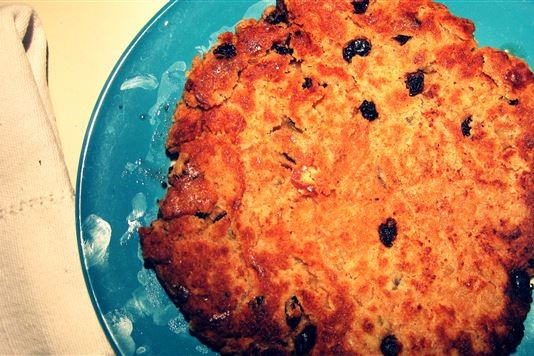Best British breads: a history of Singin’ hinnie

In the first of a new series on forgotten British breads, baking expert Jane Mason explores the history of north-east English classic Singin’ hinnie.
In the first of a new series on forgotten British breads, founder of Virtuous Bread and all-round baking expert Jane Mason explores the history of Singin’ hinnie. You'll find a link to Jane's Singin' hinnie recipe at the foot of this article.
“It’s just singin’ hinnie!”
Singin’ hinnie is a skillet or griddle bread from the north east of England, where “hinnie” was a term of endearment in the local dialect. The story goes that, whining for their tea, impatient children were told by their mothers, “It’s just singin’ hinnie!”, meaning “It’s nearly ready!”
Fire power
In the days before ovens, food was prepared on top of the fire. Soups and stews were slowly simmered in pots suspended above the flames, water was boiled in great cauldrons, and all manner of things were fried on pans placed on tripods above the coals. In the case of Singin’ hinnie, when the dough hit the hot fat in the pan it began to 'sing'... when it went quiet, you knew it was time to turn it over or take it out.
Good plain food
Singin’ hinnies, like scones, have an infinite number of recipes. Basically, they would have been made from whatever the lady of the house had on hand – but certainly nothing so luxurious as eggs, spices, or even sugar! A little handful of currants, if you were lucky enough to have them, went into the dough, and sour milk would have been the liquid of choice – it acts as an agent to help the bread rise in combination with the bicarbonate of soda, and it was a good way to use up turned milk. In the days before pasteurisation and refrigeration, this would have been a very real concern.
A bit about fat
A Singin’ hinnie dough contains butter and/or lard – again, it really depended on what you had to hand. Lard’s bad reputation is undeserved: it is lower in saturated fat than butter (40% saturated fat in lard; 50% saturated fat in butter). It also has a high ‘smoke point’, which means it’s ideal for frying at high temperatures. When making the dough for your Singin’ hinnies, I’d recommend using lard unless you are a vegetarian, or cannot eat pork. When frying your Singin’ hinnies, it is essential that you do not use butter. If you don’t want to fry your Singin’ hinnies in lard, use a good quality, high smoke point vegetable oil like peanut or avocado instead.
Singin' hinnie recipe
For a quick, delicious, simple and nutritious bread to accompany a meal, or just snack to eat with butter and jam or cheese, try Jane's Singin’ hinnie recipe here. And keep an ear out for the singing!
You might also like
Comments
Be the first to comment
Do you want to comment on this article? You need to be signed in for this feature